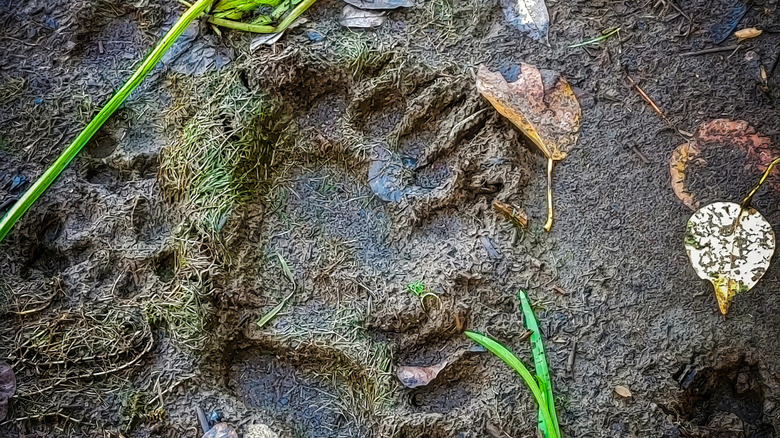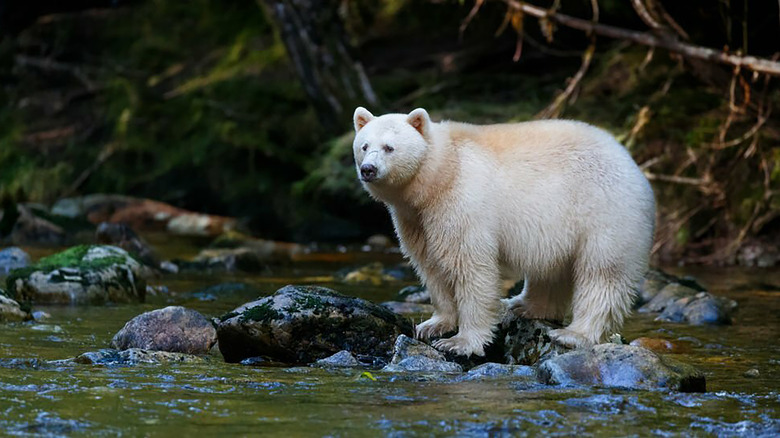A Rare Mammal Discovered In North America Now Faces A New Threat
There are three types of bears in North America: the black bear, the grizzly bear (also known as the brown bear), and the polar bear. Among the three, the most common is the black bear, with an estimated 600,000 to 900,000 in North America. Yet, among the black bears, there is an extremely rare variant known as the Kermode or Spirit bear, which appears white due to a recessive gene, with a population of fewer than 500.
The discovery of a Kermode bear is a once-in-a-lifetime opportunity, often requiring active effort to spot one. For photographer Shelley Lindaas, who grew up in Terrace, British Columbia, where the bear was spotted, she had dreamed of encountering a Kermode since childhood. Lindass, who would capture the photos of the extremely rare bear, told CBC in a 2025 article, "They were sitting right on the highway," adding, "I get unusually excited when I see any wildlife...but I was off the charts excited." Despite this remarkable discovery, Lindass stressed the importance of keeping her discovery silent, stating, "I always wait until August before I post pictures, and I get bombarded by other wildlife photographers about where I took them."
Lindass's concern over sharing the location of a Kermode is shared by others who have captured photos of the rare mammal, expressing the importance of minimizing animal-human interaction. With many bears already under threat due to people not respecting boundaries, the uncommon Kermode may be at even greater risk due to its rarity.
How humans pose a threat to the rare Kermode bear
Many people are unsure of the best way to respond to a bear when walking a dog or alone. Yet, it is essential in these interactions to keep a safe distance and respect a bear's space. At home, keeping food stored correctly is also key to avoiding unwanted interactions.
In British Columbia, Canada, where the Kermode bear was spotted, the province euthanized 603 bears in 2023 after being considered a threat to humans. Issues such as leaving out trash, pet food, or greasy barbecues are the primary causes of bears becoming comfortable entering human spaces and leading to dangerous encounters. Moreover, directly feeding bears can lower their natural fear of humans and turn them into nuisances. For the unique Kermode bear, people's desire to get a closer look can have disastrous effects on its safety through direct interaction or carelessness.
Photographer Shelley Lindaas's discovery of a Kermode bear highlights the surprising beauty of nature, but it also acts as a reminder to tread carefully to ensure such remarkable creatures stay safe. For more articles on fabulous finds in nature, check out the abandoned building a few arctic polar bears call home, or learn about South America's largest mammal thought extinct that was spotted in a protected zone.

